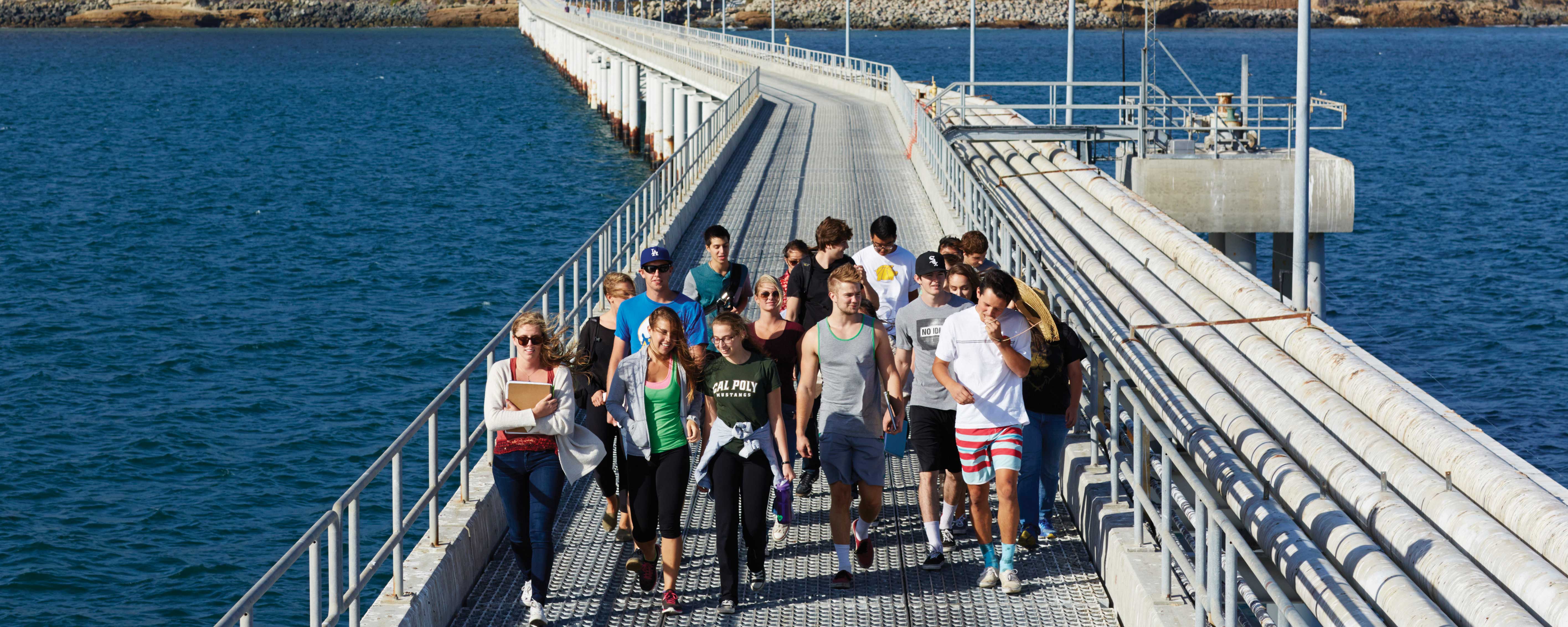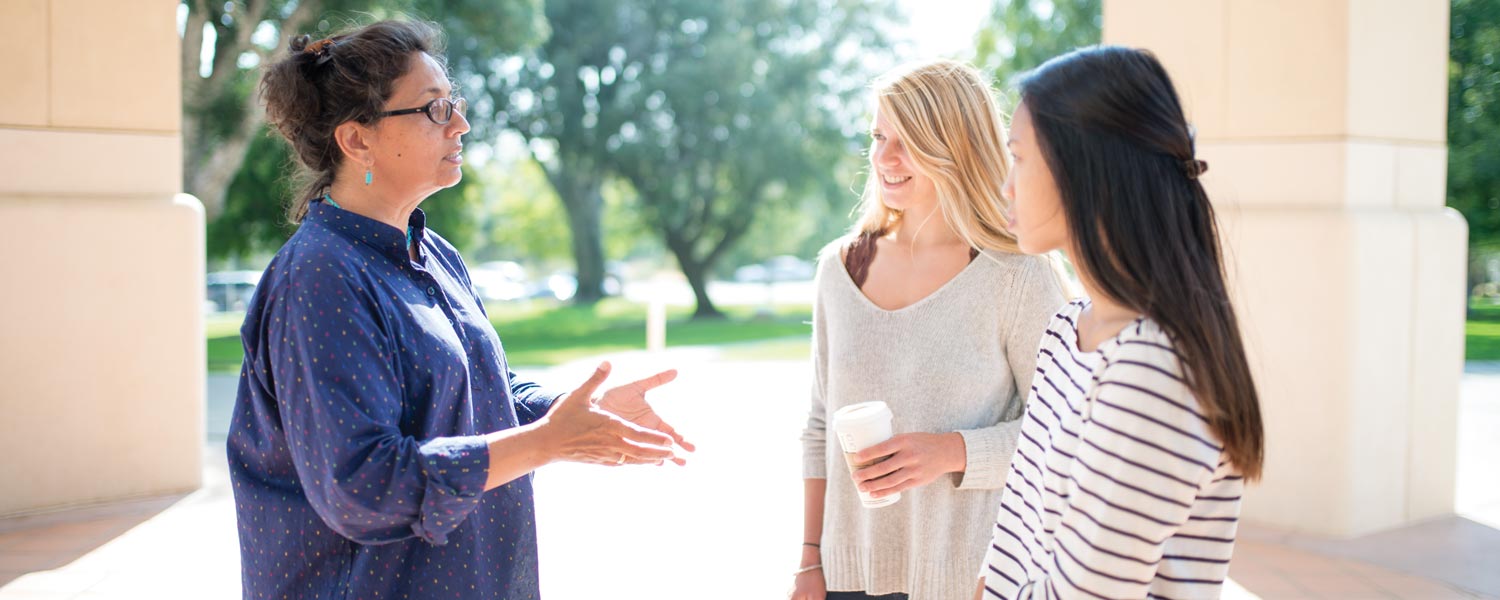cal poly news
Downloading the Ocean
By Brian Maxey

At the end of the Cal Poly Pier, researchers are reeling in a wealth of data from deep in the Pacific Ocean
Every 30 minutes, a winch positioned off the edge of the Cal Poly Pier lowers a tethered array of sophisticated ocean monitoring instruments about 10 meters deep into the water column of the Pacific Ocean. While below the ocean’s surface, the array, referred to as a “profiler package,” is busy collecting data to transmit to researchers on land, like Cal Poly physics Professor Ryan Walter. When assessed and analyzed, the captured data helps researchers understand the complexities of the ocean environment.
To date, the profiler has collected close to 250 million data points.
A push for smarter and more robust data in recent years has helped researchers solve problems and unlock new opportunities. For Cal Poly oceanographers and marine biologists, they’re using the data to gain crucial insight into things like the impact of El Nino — which in 2015-16 drove local water temperatures to record highs — and tracking coastal hazards. Propelled by an ever-increasing rate of connectivity and mobile accessibility, much of the data being captured by Cal Poly is being transmitted in real time.
“Without this current information, it would be nearly impossible to predict things like oil spill evolution,” says Walter, who specializes in physical oceanography.
Monitoring the ocean environment is also important for understanding things like harmful algal blooms, low oxygen concentrations (or coastal hypoxia), ocean acidification, and biological productivity. And thanks to partnerships with, and funding from, regional organizations like the Southern California Coastal Ocean Observing System and the Central and Northern California Ocean Observing System, Cal Poly has a suite of technologically advanced instruments to help researchers gain a better understanding of climate, ocean systems and weather.
“As a science platform, the Cal Poly Pier is pretty unique among programs and universities around the state and even the country,” Walter says. “The pier allows researchers and students to have access to a research station out in the middle of the ocean and supports measurements in much deeper waters than they would be able to at many other piers.”
While Walter and Cal Poly biology professor Dean Wendt are the two principal investigators on the project, this work would not be possible without help from Cal Poly research technicians and scientists like Ian Robbins and Grant Waltz, as well as the help of many undergraduate students from several different colleges at Cal Poly that gain valuable hands-on research experiences working on the project.
Cal Poly’s goal is to make sure all of the data collected from the area is widely available.
“We want people to use the data,” Walter says. “This is an effort meant to promote collaboration and put the available data into use.”





